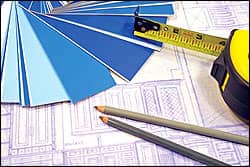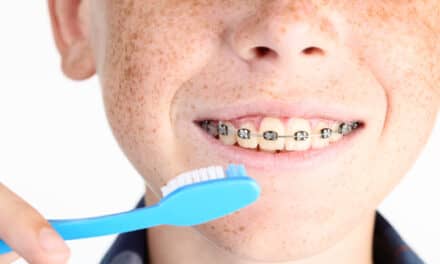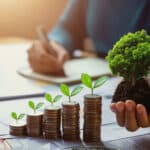by Agnes Akiko Kan, Assoc AIA, and Orhan C. Tuncay, DMD
“Green” concepts can apply to your entire practice
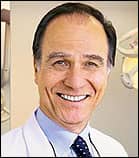
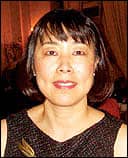 The state of our Union has rarely been as interesting as it is now. During these trying times, we see it at a crossroads in search of its cultural identity—especially in business. The business of orthodontics is included in the changes that are happening. Things are no longer the same. We need to transform, but which way?As a country, we have become rich because others bought what we had to sell—not because we’ve taxed ourselves to prosperity. The owners of orthodontic practices can relate to this. Cutting the overhead may help keep the practices afloat until better times, but it does not make it grow; it is a form of taxing oneself to prosperity.
The state of our Union has rarely been as interesting as it is now. During these trying times, we see it at a crossroads in search of its cultural identity—especially in business. The business of orthodontics is included in the changes that are happening. Things are no longer the same. We need to transform, but which way?As a country, we have become rich because others bought what we had to sell—not because we’ve taxed ourselves to prosperity. The owners of orthodontic practices can relate to this. Cutting the overhead may help keep the practices afloat until better times, but it does not make it grow; it is a form of taxing oneself to prosperity.
We argue that the current recession is a watershed moment for small business. It can give way to a new mind-set, opportunities, and exploitations—in other words, a new culture. The new culture is not reducing overhead while keeping business as usual. Instead, it is a low-cost and efficient way to run the business while touching the lives of others.
This combination of low cost and efficiency is the key to business growth in our current climate. It may be termed “green business” or, more specifically, “green orthodontics.” Green orthodontic services need to be as efficient and cost-effective for the practice as they are for the client. And these concepts cannot be add-ons or cut-and-paste operations. The green element pervades the entire practice, from its building to its treatment philosophy.
A green orthodontic practice starts with the right space. A low-maintenance building or office space is sustainable, as are evidence-based treatment decisions. Within that sustainable space, the orthodontist does the right thing for the patient when the modus operandi is low impact on the environment, low impact on resources, and there is a low burden of treatment. By this we mean a low burden in terms of frequency and length of appointments, degree of perceived pain, inconvenience of appointment dates and times, and social reaction from peers.
A green orthodontic practice incorporates energy and environmental design, with a focus on sustainable business in a sustainable environment. A green orthodontic practice has a social conscience and projects it.
Case Study
 The walls and trim were painted usingdurable, nontoxic MDC and Zolatone paints.
The walls and trim were painted usingdurable, nontoxic MDC and Zolatone paints.Summer Orthodontics was founded by Summer Blake, DDS, MS. She is an innovative person by nature, and her practice reflects both her personality and her values in life. After graduating from Temple Orthodontics, she enjoyed working with Gib Snow, DDS, for several years. Now a mother of two, she has become more conscious of making the world a better place for children and the community.
The design and construction of her new office was a reflection of motherly thoughtfulness and a compassionate approach to problem solving. The process of building a green orthodontic practice was no less demanding than her newborn baby. Most notably, as this green office has been shaping up, Blake formed her green practice philosophy. In her definition, green orthodontics is efficient treatment with no wasted time, resources, or emotions. It is a philosophy in which the building is as ethical as the practice.
In building Blake’s green practice environment within the existing commercial building complex in Manhattan Beach, Calif, there were a number of considerations: a unique design to provide the most efficient circulation of people and work, allowing spaciousness, eliminating wasted space and energy, and creating openness while providing privacy. Building materials and products were chosen based on environmental friendliness; efficiency; and sustainability in energy, resources, and nature. The project’s general contractor had to follow, step-by-step, a method of construction to satisfy the United States Green Building Council’s guidelines for Leadership in Energy and Environmental Design (LEED) certification.
 A treatment room features LED lighting, recyclable glass panels, and bamboo flooring.
A treatment room features LED lighting, recyclable glass panels, and bamboo flooring.The challenge was to create an aesthetically pleasing, high-tech clinical environment that is also a peaceful and rejuvenating space for patients and visitors. One of the project’s goals was to heighten people’s consciousness of green environment in that space, and displaying the LEED Certification in the lobby was a way to publicly announce Blake’s commitment to building efficiency and sustainability. Visitors are further educated by the design elements that accentuate the office’s energy-saving and sustainable aspects. Some of the proposed green elements were the following:
- Solar panels: The use of renewable energy technologies provides points toward LEED certification.
- TOTO plumbing fixtures: these regulate flow to save water, and receive credit for using 20% less water than baseline water usage in generic fixtures.
- Bamboo flooring: used for floors throughout the office, bamboo is known for its ability to regenerate quickly and, hence, sustain the natural environment. This receives credit toward LEED certification, as it is a rapidly renewable material. Bamboo flooring also is qualified to get further credit as a low-emitting material. Although the product is manufactured overseas, it was sourced from a local business in an effort to earn potential credit for locally sourced products.
- LED down-lights and decorative soffit lights: Placed throughout the office, these consume a fraction of the electricity of incandescent and compact fluorescent lights (CFLs). Not only do LEDs consume 50% less energy than CFL fixtures, they last eight times longer. That means LEDs save twice in energy consumption when compared to CFLs and eight times more than incandescent lights. For example, according to one lamp manufacturer’s comparative specification data, a 10-watt LED gives the same amount of light output as an 18-watt CFL or a 75-watt incandescent fixture. A 15-watt LED is comparable to a 26-watt CFL or a 100-watt incandescent fixture. LEDs also do not contain mercury, unlike CFLs, an integral point in qualifying for LEED certification.
- Resin panels: Used for the receptionist’s counter and refreshment counters, they are made from recycled, environmentally friendly material supplied by a company called 3Form.
- Glass fixed panels and sliding panels: Recognized as sustainable materials, they can be recycled.
- Environmentally friendly paints: The basic wall paint was water-based MDC paint with ceramic microspheres. It is designed for health care settings and is known for its low odor, high level of cleanliness, and durability. It has 3,200 scrub cycles (you can wipe the surface 3,200 times before it fails). It emits a low level (less than 49 g/l) of volatile organic compounds (VOCs), which are emitted as gases from solids or liquids. Zolatone paint was used for the accent color. It is a nontoxic, water-based paint that has 4,000 to 5,000 scrub cycles, compared to 300 scrub cycles for standard latex paint. Zolatone has a VOC level of 60 to 80 g/l, compared to 0 to 600 g/l for generic paint. Its life-cycle cost is 20 times lower than regular paint.
Green Orthodontics
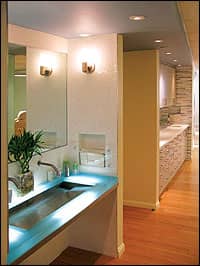 The plumbing fixtures have a regulatedflow rate, and the counters are madefrom a recycled resin material.
The plumbing fixtures have a regulatedflow rate, and the counters are madefrom a recycled resin material.In addition to the building-related elements, the green orthodontist should be conscious of parent/patient factors. For example:
- Appointments can be made to reduce the frequency of visits, thereby reducing gas consumption.
- Treatment plans can be designed to start a patient’s treatment at the optimal age; again, to reduce the number of total visits to the office and the burden of treatment.
- Bonding of brackets should be done with the utmost care to reduce breakage.
- Regular examinations for periodontal health and the formation of white spot lesions can reduce the need for subsequent dental treatment.
- The final occlusion and retention protocol can be designed to reduce the number of office visits.
- Stationery, printed materials, and the like can be printed on recycled paper.
- Electronic media can be used for study models and wax setups, and certainly for imaging and practice management.
- Offices can become paperless by converting paper-based patient files to digital patient files.
The green orthodontic practice is built on clever design of the space, smart choices in materials, and an efficient practice style. These are important considerations, because the character of the practice is the most powerful marketing tool a business owner can have to set himself or herself apart from the crowd.
Green orthodontics is a package, a practice philosophy. It eliminates the frills and duplication in design, building, and treatment. Installation of bicycle racks, for example, is green. To the extent possible, one-step consultation is green, since it eliminates multiple trips to the office. Patients need not come in first for an initial examination, and then for records, and then a third time for consultation. These multiple trips are best reserved for very special instances.
Orthodontists were early adopters of the concept of the paperless office. It was the first step. The rest is only natural. But perhaps the most important element of this green package is the long history of orthodontists’ influence on their patients. To inspire them in the green path is to affect our future as a society.
Agnes Akiko Kan, Assoc AIA, is co-founder and owner of CIVITAS Architects, Philadelphia. She can be reached at [email protected].
Orhan C. Tuncay, DMD, is chairman and program director of the Department of Orthodontics at Temple University. He is the founding editor of four orthodontic journals: Orthodontics & Craniofacial Research, Progress in Orthodontics, Cases & Commentaries in Orthodontic Technology, and Clinical Reports & Techniques. He has private practices in center city Philadelphia and Bryn Mawr, Pa. He can be reached via e-mail at or through his Web site, rittenhouseortho.com.


